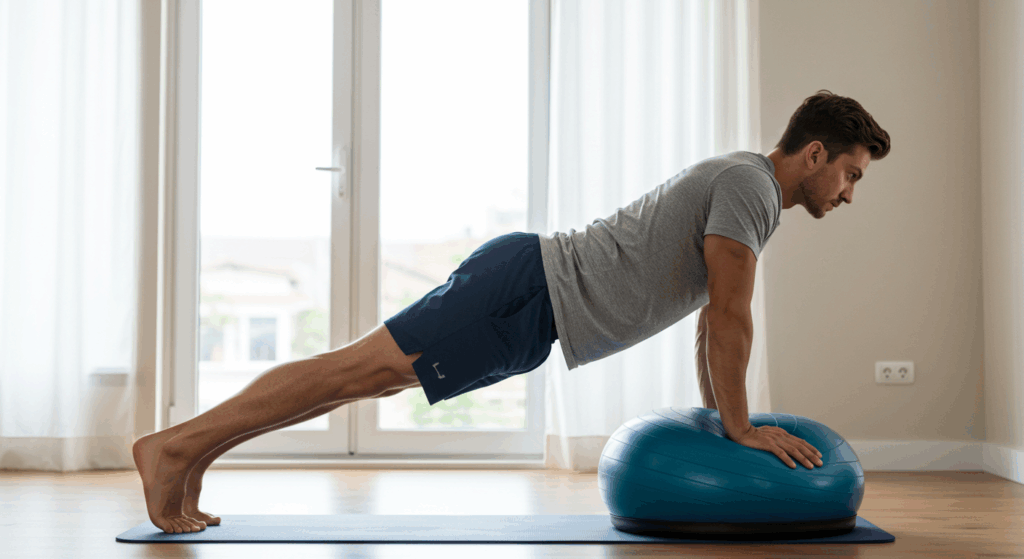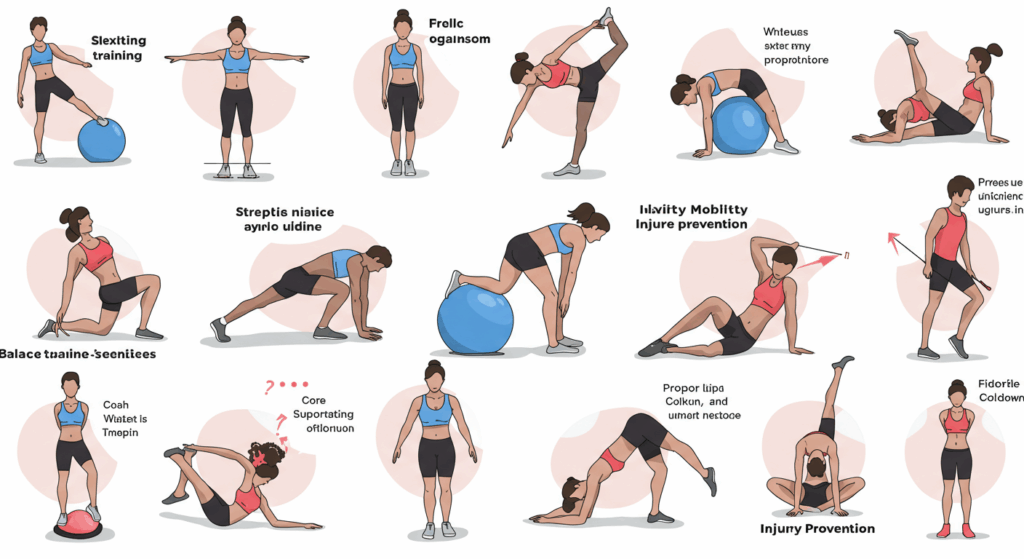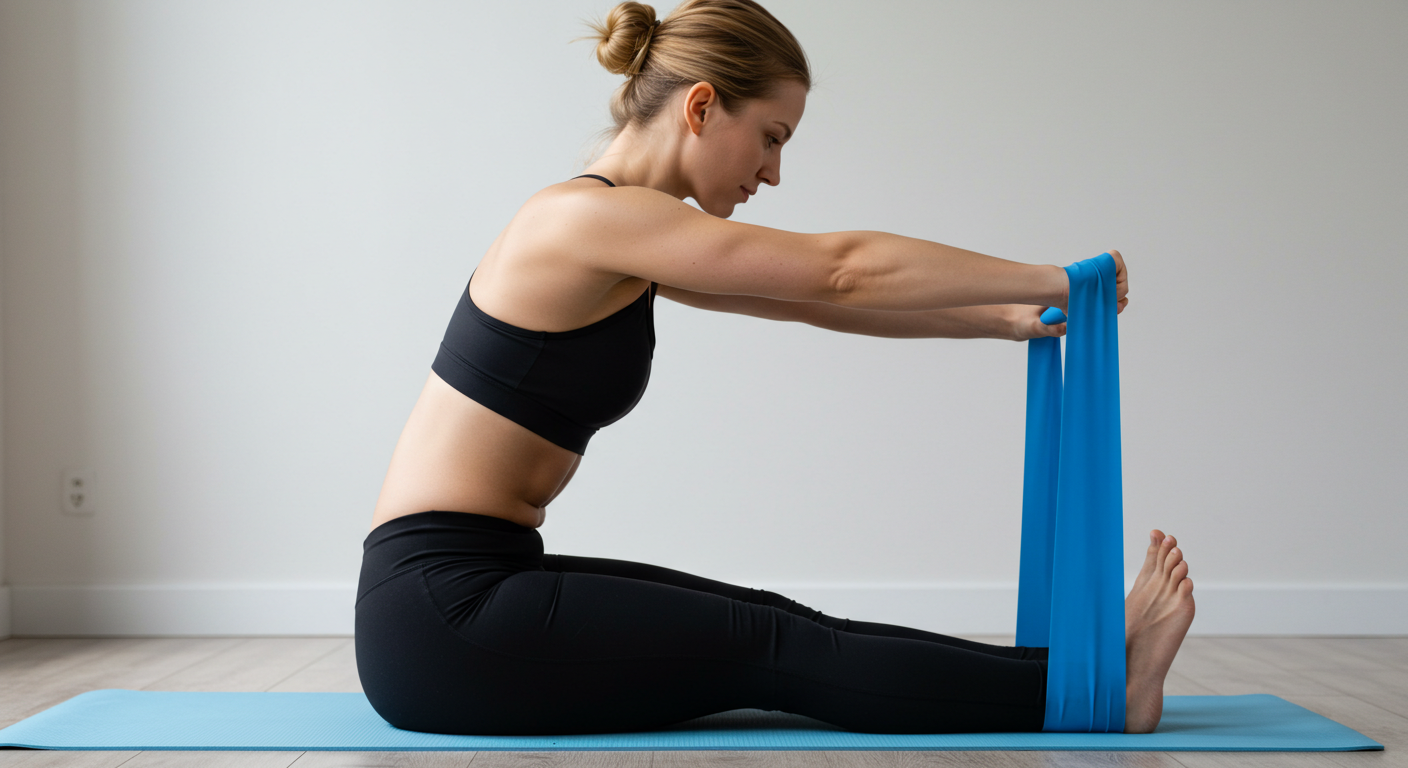Most fitness enthusiasts focus on building strength and endurance, but there’s a crucial element often overlooked: injury prevention training. This fundamental approach to fitness centers on balance and flexibility work that protects your body from common injuries, improves movement quality, and enhances overall performance.
Injury prevention training isn’t just for athletes recovering from setbacks. It’s a proactive strategy that everyone—from weekend warriors to professional competitors—should incorporate into their routines. By dedicating just minutes each day to balance and flexibility work, you create a protective foundation that reduces strain, prevents falls, and keeps your joints healthy.
Your body is designed to move freely and efficiently. When balance weakens or flexibility declines, compensatory patterns emerge that stress muscles and joints unnaturally. This sets the stage for strains, sprains, and chronic pain that could have been avoided.
Let’s explore how you can use targeted exercises to build a more resilient, injury-resistant body.

Understanding the Science of Injury Prevention Training
Before diving into exercises, it’s important to understand why balance and flexibility are so protective.
Balance relies on a complex system involving your core muscles, nervous system, and vestibular system in your inner ear. These components work together to keep you stable whether you’re standing still or moving dynamically.
When balance deteriorates, your body compensates by overusing certain muscle groups. This creates imbalances that pull joints out of proper alignment, increasing injury risk dramatically.
Flexibility determines how freely your muscles and joints can move through their full range of motion. Tight, shortened muscles restrict movement and force your body to compensate in ways that strain tendons and ligaments.
Together, these elements form your body’s natural defense system against injury. Strong balance prevents falls and missteps. Good flexibility ensures muscles can absorb force without tearing or straining.
How Injury Prevention Training Reduces Common Risks
The protective benefits of injury prevention training extend across all types of physical activity.
Falls and Balance-Related Injuries
Loss of balance causes countless injuries annually, particularly in adults over thirty. Balance exercises enhance proprioception—your body’s spatial awareness—allowing faster reactions when you encounter uneven surfaces or unexpected obstacles.
Improved stability means you can catch yourself before a stumble becomes a fall, protecting vulnerable joints like ankles, wrists, and hips.
Muscle Imbalances and Overuse Injuries
When certain muscles become tight while others weaken, your body develops movement compensations. These patterns place excessive stress on joints and soft tissues, leading to tendinitis, IT band syndrome, and similar overuse conditions.
Flexibility training corrects these imbalances by restoring proper muscle length and joint alignment. This allows forces to distribute evenly during movement rather than concentrating in vulnerable areas.
Joint and Ligament Protection
Proper alignment during movement is essential for joint health. Injury prevention training keeps joints tracking correctly, which significantly reduces the risk of ACL tears, ankle sprains, and knee injuries—especially during sports or intense workouts.
Flexible muscles also absorb shock more effectively, protecting cartilage and reducing inflammation that leads to chronic joint problems.
Essential Exercises for Injury Prevention Training
Building an effective injury prevention training program doesn’t require expensive equipment or hours of time. These fundamental exercises provide maximum protective benefit.
Balance Training Fundamentals
Single-leg stands form the foundation of balance work. Start by standing on one foot for thirty seconds, then switch sides. Progress by closing your eyes or standing on an unstable surface like a foam pad.
Heel-to-toe walks strengthen the small stabilizing muscles in your feet and ankles while improving gait control. Walk in a straight line placing your heel directly against your toes with each step.
Bosu ball exercises add dynamic challenge. Try squats or lunges on the unstable surface to engage your core and improve reactive balance.
Yoga poses like Tree, Warrior III, and Chair combine balance with controlled strength, building stability through sustained holds.
Flexibility Training Essentials
Dynamic stretching prepares muscles for activity. Leg swings, arm circles, and walking lunges with rotation warm tissues without reducing power output.
Static stretching after workouts allows deeper muscle lengthening. Hold hamstring, calf, hip flexor, and shoulder stretches for thirty seconds each to improve range of motion.
Foam rolling releases fascial restrictions and improves tissue elasticity. Roll major muscle groups for one to two minutes, pausing on tender spots.
Yoga and Pilates provide comprehensive flexibility work while strengthening stabilizing muscles throughout your body.
Consistency matters more than duration. Just ten to fifteen minutes daily of focused balance and flexibility work dramatically reduces injury likelihood over time.

Integrating Injury Prevention Training into Your Routine
The most effective injury prevention training fits seamlessly into your existing workout schedule.
Warm-Up and Cool-Down Integration
Begin every workout with five minutes of dynamic stretching and balance activation. This primes your nervous system and prepares muscles for the work ahead.
End sessions with ten minutes of static stretching and foam rolling. This aids recovery, reduces soreness, and maintains flexibility gains.
Circuit Training Combinations
Alternate strength exercises with mobility work during circuit training. Follow a set of squats with hamstring stretches or balance holds. This approach maintains workout efficiency while building injury resistance.
Functional Equipment Options
Simple, affordable tools enhance your training:
Resistance bands provide adjustable tension for flexibility work and can be used anywhere.
Balance boards or stability balls challenge your core and improve proprioception through unstable surface training.
Foam rollers facilitate self-myofascial release for better recovery and tissue health.
These versatile tools keep training engaging while targeting multiple fitness qualities simultaneously.
For evidence-based guidance on balance training benefits, visit the American Council on Exercise.
Long-Term Benefits Beyond Protection
While injury prevention is the primary goal, these training methods offer additional advantages that improve quality of life.
Enhanced coordination translates to better athletic performance across all activities. You’ll move more efficiently with less wasted energy.
Improved posture and spinal alignment reduce chronic back pain and neck tension that plague desk workers and active individuals alike.
Greater confidence in movement encourages continued physical activity as you age. When you trust your body’s stability, you’re more likely to stay active and independent.
Better recovery between workouts means you can train more consistently without accumulated fatigue. This accelerates progress toward all fitness goals.
Building Your Injury-Resistant Body
Injury prevention training is an investment in longevity. Every minute spent on balance and flexibility pays dividends in reduced injury risk and improved movement quality.
You don’t need complex programs or specialized facilities. Start with basic exercises and progress gradually as your stability and mobility improve.
The key is consistency. Make balance and flexibility work a non-negotiable part of your fitness routine, just like strength training or cardio.
Your body will reward you with pain-free movement, better performance, and the confidence to tackle physical challenges without fear of injury.
Begin today with five minutes of stretching and single-leg balance work. Add exercises progressively as they become comfortable. Within weeks, you’ll notice improved stability, reduced stiffness, and enhanced body control.
Remember: preventing injuries is easier than recovering from them. Give your body the preparation it deserves, and it will serve you well for decades to come.

